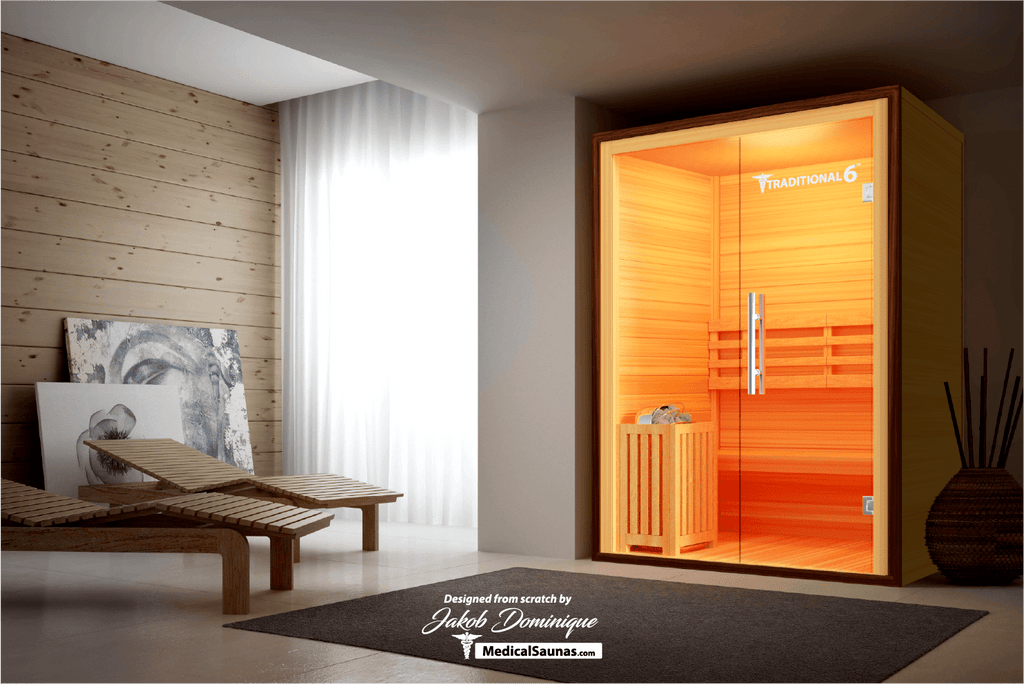Some Known Details About Traditional Sauna
Some Known Details About Traditional Sauna
Blog Article
What Does Traditional Sauna Mean?
Table of ContentsThe Of Traditional SaunaIndicators on Traditional Sauna You Should KnowExamine This Report about Traditional SaunaTop Guidelines Of Traditional SaunaExcitement About Traditional Sauna
A lot of the weight shed in a sauna is water loss and is re-gained upon rehydrating. Without a question sauna can be a vital part of a healthy weight loss program. To take a look at the distinctions between standard and IR saunas, I will certainly divide these right into verifiable, theoretical, and fabricated differences.Therefore, the most popular point in the saunawhich goes to the ceiling straight above the sauna heateris commonly in between 185 and 190 F. Claims that a conventional sauna goes beyond 200 F is merely not true and not applicable for electrical saunas sold in the United States. The temperature for a far-infrared sauna is typically established in between 120 and 140 F; however, unlike the typical sauna, the goal in and IR space is not to attain a heat.
As a result of this, the temperature level distinction is nearly pointless, since excessive sweating causes both sauna kinds, but the technique of heating up the body is various. In an IR sauna the bather will certainly feel hot and will sweat a lot, yet at much reduced temperature levels (Traditional Sauna). Thus, if the goal is to invest longer time periods in the sauna, the IR sauna is an excellent selection
When a traditional sauna has been appropriately heated, the sauna wall surfaces are warm, the air temperature level has accomplished established temperature level and the rocks are extremely heated. As an intriguing side note, the warmed wall surfaces and the rocks are emitting far-infrared heat, combined with the heated air, to produce an "covering warmth".
Traditional Sauna Can Be Fun For Everyone

When the heat is accomplished, the components cycle on and off to preserve the heat. A lot of standard sauna individuals appreciate pouring water over the rocks to produce heavy steam to increase sauna moisture levels. The advantages of pouring water over the rocks include: making the area a lot more comfy, dampening the nasal passages, and permitting the usage of aromatherapy by blending important oils with the water.

When the power goes into the body, it triggers the body temperature level to enhance and ultimately causes perspiration. In an infrared sauna it's important for the emitters/heaters to stay on almost frequently. Given that there is no mass of rocks to preserve warm, the sauna will certainly cool if the emitters shut off.
As stated above, the sauna bather in an infrared space wishes to place himself before operating emitters to obtain optimal take advantage of the warm. The home heating time for both spaces can be very different, depending upon just how the areas are used. For a traditional sauna, a more helpful hints bather should permit 30-40 minutes for the area to attain a desired temperature and to appropriately pre-heat the rocks.
The 6-Minute Rule for Traditional Sauna
A well built sauna will typically achieve a temperature level of 150-160 F in concerning 30-40 minutes. For hotter temperatures, the space may need to heat for a longer period.

Traditional saunas have a tendency to be bigger (therefore utilize even more power) than infrared saunas, although standard saunas are definitely offered in one and two individual sizes. For a two-person standard sauna, 5x6 or 5x7 dimension is most preferred. The leading bench can easily seat two or three individuals and is also enough time to exist down during the sauna session.
See This Report on Traditional Sauna
The ordinary price per kWH of electricity in the united state is roughly $0.11, so a 4.5 kW heating unit will certainly set you back approximately $.50 to run for one hour, if the heater runs constantly for one hour. Usually a sauna heating unit will run for 75% of the very first site hour and 50% of subsequent hours on given that the aspects cycle once the set temperature level is accomplished.

Finally, there is a seldom discussed distinction in the social experience between the two rooms. While our culture has shed several of the social advantage of the traditional sauna experience, it can be very socially gratifying (Traditional Sauna). From family members time in the sauna, to heart-felt discussions with loved ones, to sauna partiesthe conventional sauna experience can cause intimate mingling
Traditional Sauna - Questions
Many greater end infrared spaces consist of tinted light therapy, sound systems and full-glass fronts.
Report this page